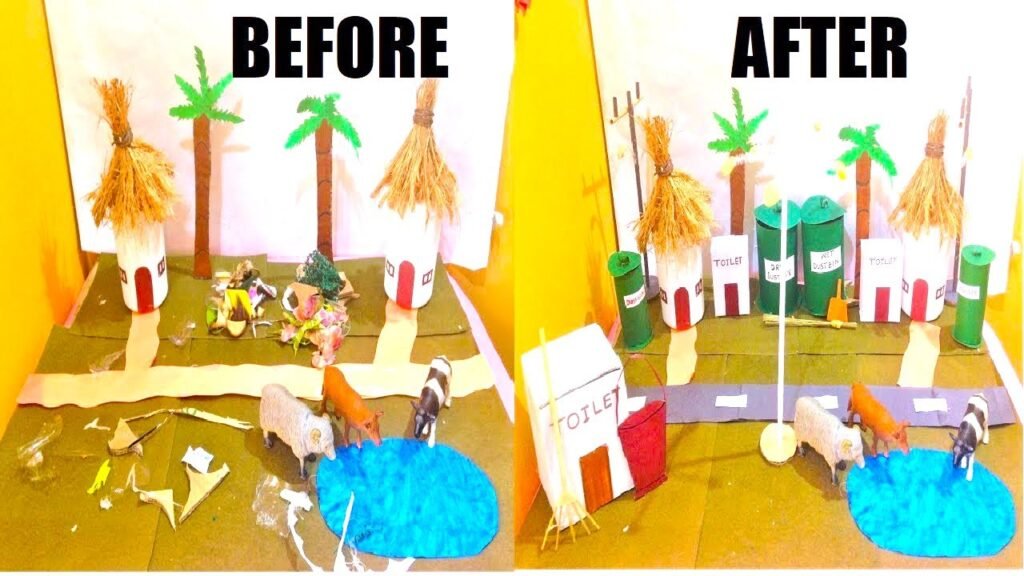Introduction:
Creating a model of a Swachh Bharat village is a wonderful way to visualize and promote cleanliness, hygiene, and sustainability in rural areas.

In this project, we’ll use everyday items like soap boxes, cardboard, and paper to represent houses, hospitals, domestic animals, and thatched roofs.
We’ll also demonstrate the difference between a village with and without proper waste disposal methods. Let’s embark on this project to inspire cleaner and greener rural communities!
Materials Needed:
- Soap boxes (for houses, hospitals and buildings)
- Cardboard sheets
- Construction paper or colored paper
- Scissors
- Glue or adhesive tape
- Marker or pen
- Thatched material (straw or craft paper)
- Small figurines or cut-outs (optional)
Creating the Village Model:
1. Houses:
Step 1: Soap Box Houses (With and Without Thatched Roofs)
- Use soap boxes as the base for houses. Cut cardboard pieces to create walls and roofs. For thatched roofs, use straw or craft paper to simulate a traditional rural roofing style.
2. Hospitals:
Step 2: Cardboard Structure
- Cut and assemble cardboard pieces to create a small hospital building. Add details like windows and doors using colored paper.
3. Domestic Animals:
Step 3: Paper Cut-outs
- Create small cut-outs or figurines representing domestic animals like cows, goats, chickens, etc., using colored paper.
4. Dustbins (With and Without):
Step 4a: With Dustbins
- Create small cardboard boxes and paint or cover them with colored paper to represent dustbins. Place them strategically in the village to encourage proper waste disposal.
Step 4b: Without Dustbins
- In a separate section, represent a village without dustbins to illustrate the importance of proper waste management.
5. Arranging the Village:
Step 5: Layout
- Arrange the soap box houses, hospital, domestic animals, and other elements on a cardboard base to create a village layout.
6. Adding Details:
Step 6: Fine Details
- Use markers or colored paper to add finer details such as windows, doors, pathways, and gardens.
7. Labeling:
Step 7: Information Labels (Optional)
- Optionally, you can add small labels to educate viewers about the different elements and their significance in promoting cleanliness.
Conclusion:
Through this model, we’ve visualized a Swachh Bharat village, emphasizing the importance of cleanliness, hygiene, and waste management. It’s a powerful tool to raise awareness about maintaining a clean and sustainable environment in rural areas.

